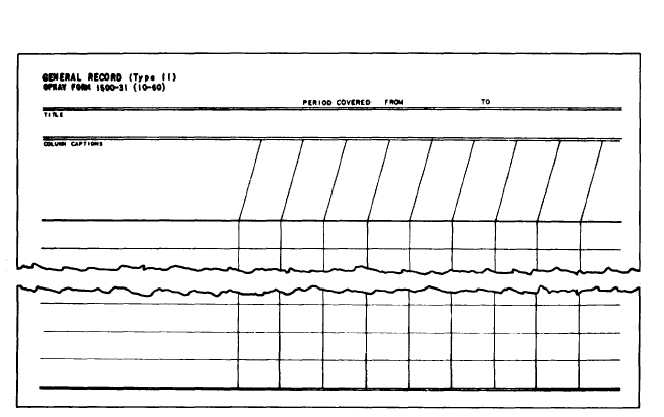Figure 6-2.—General Record (Type II).
ADVANTAGES OF EDUCATION
AND TRAINING
In regard to advancement in rate, trained
personnel will have an advantage over untrained
personnel on at least two occasions. First,
personnel who complete all command training
requirements on time can reasonably expect
to become advancement candidates and receive
the commanding officer’s advancement recom-
mendation. Second, even if basic training require-
ments are met, advanced training is likely
to give that extra edge to the advancement
candidate. Completion of Navy schools, Navy
correspondence courses, and secular education
will benefit advancement candidates. Selection
boards for E-7 and above take into account the
education and training courses the candidate has
completed.
TRAINING SESSIONS
Training sessions must be designed to accom-
modate the variety of experience levels of assigned
RPs. Some personnel may be assigned to RP
billets directly from recruit training. Others may
come to the office of the chaplain via lateral
conversion from another Navy rating. Some
members are authorized to make an interservice
transfer from the Marine Corps to the Navy to
serve as RPs. Still others become RPs via a
command Striker Selection Board or Professional
Development Board.
ON-THE-JOB TRAINING (OJT)
The various ways of becoming an RP all share
one common element—the need for on-the-job
training (OJT). On-the-job training is a vital
part of training for RPs, as they learn by doing
at the duty station to which they are assigned.
On-the-job training and RP school training can
complement one another by providing a fuller
perspective of what it means to be an RP.
Procedures not fully understood in one mode of
training may be clarified in the other.
READINESS TRAINING
A naval officer once stated, “The main
objective of any (ship’s) training program ought
to be to train the crew to win in war.” With the
world situation becoming increasingly volatile, to
6-6


